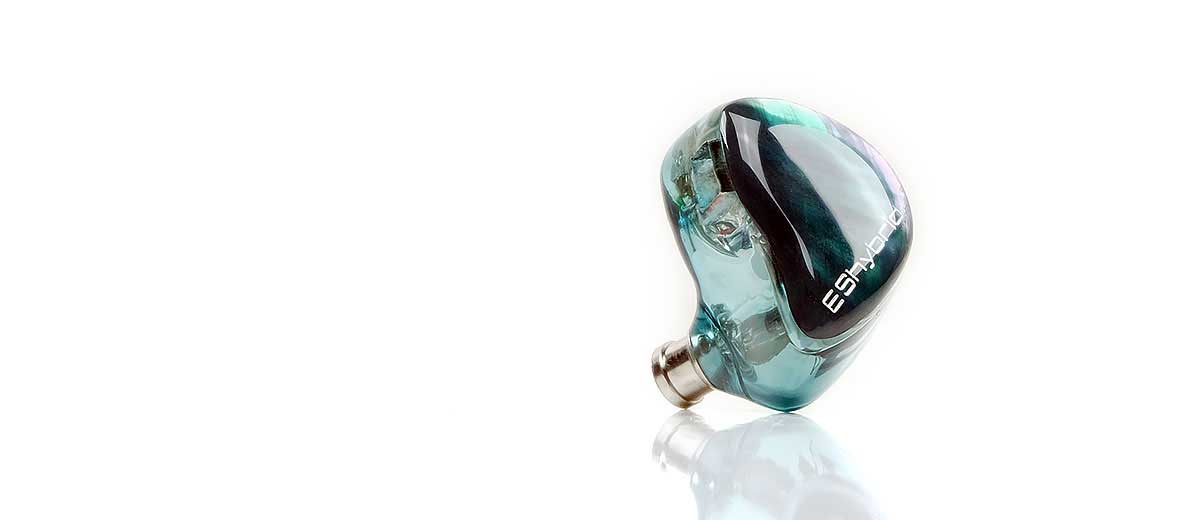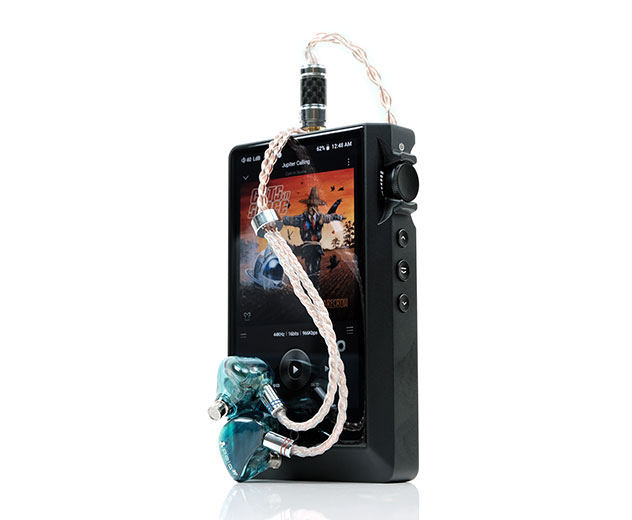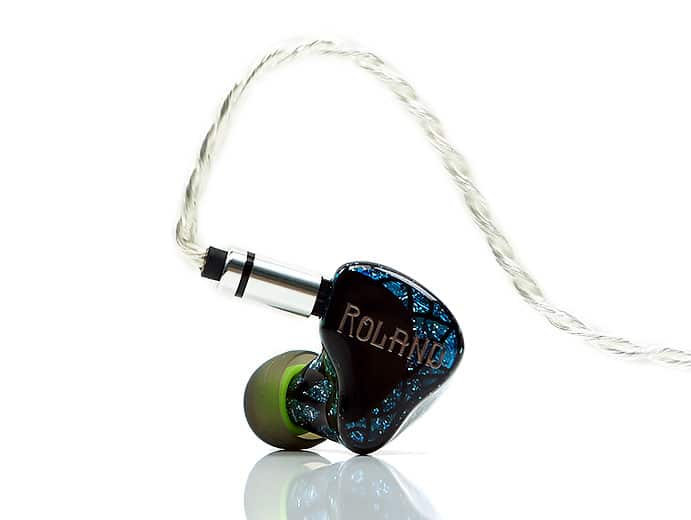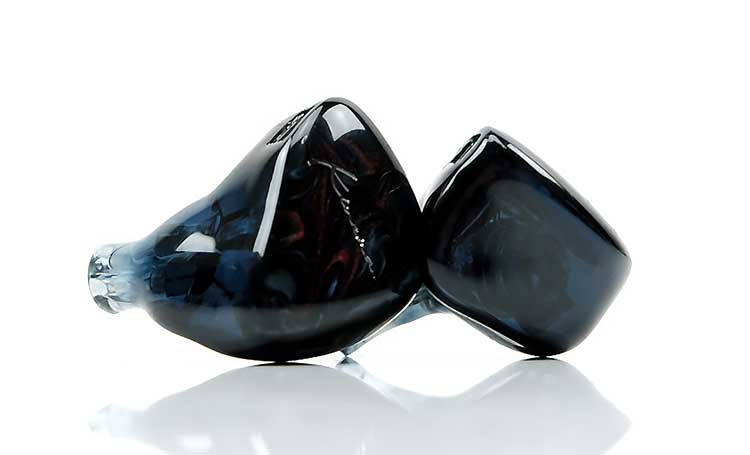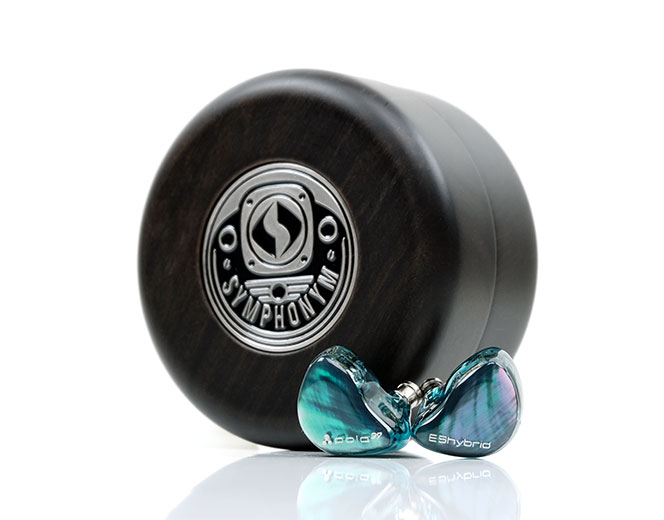Sound Impressions
Summary
Oh, ‘upgradez!”. This doesn’t sound anything like the original but in a good way. You can read more about a detailed comparison between the two in our comparisons section below but the basic summary is a punchier delivery with a very engaging midrange tuning. The original sounds a shade muted by comparison, especially in the mids which I always felt was the POLA’s Achilles heel.
The POLA39 has more of a gentle u-shaped tuning with a nice punchy mid-bass bias, forward or exciting vocals, and an incredibly smooth transition into a proper electrostatic treble sound. I say proper because the Sonion drivers require considerable power to get right and some alternatives can often sound too relaxed to be distinctive.
The POLA39 treble is up there with the like of the Khan as being much bolder but without any shrill and peaking BA timbre to contend with. It is a lovely clean sounding tuning and contrasts just wonderfully with its slightly warmer and fuller midbass delivery. All of that means the mids timbre is spot on with a nice harmonic balance between smooth and clean-edged.
I would not call this tuning neutral per se, but rather slightly on the light and intoxicating side, especially for female vocals. The balance overall is a bit more delicate in tone compared to Khan‘s more visceral and perhaps drier upper mids and treble approach.
Staging
The POLA39 is more about height and width over depth. The original 13mm POLA driver does feel like it can reach deeper and rumble a shade harder. However, the POLA39 bass is more exciting than the original because of that punchier tighter tuning.
You won’t notice that lack of true rumble because of how quick and engaging it can be with the right tracks. Old-school trance lovers will take to the POLA39 because of the forward midbass that plays to their need for higher BPM tracks.
Vocals and the mids, in general, have been completely reworked sounding much further forward in the POLA39 staging compared to the original. Upper mids are not overly shouty or piercing either though they can be a little harder-edged if the POLA39 is underpowered. That harder edge from the Sonion stats drivers slacking off on weak power.
The headroom and treble reach of the POLA39 is just excellent. You will have problems picking out delicate high-pitched percussion rings and synth runs with the POLA39 treble clarity.
Bass
I love the control on the POLA39 bass. It manages to sound deft, detailed, and ‘malevolent’ all at the same time. The only weakness is the lack of true sub-bass rumble which the original larger 13mm driver in the POLA has a very slight edge.
Competitors such as the Fearless Roland will give you a denser and heavier delivery but not the same separation and layering of the POLA39 low-end.
I honestly do not think you will care too much about that given just how classy this new dynamic driver sounds. Throw on The Encounter’s “Bad Mood” synth classic just to get a feel for how good the POLA39’s low-end layering and control actually are. The timbre is all dynamic driver, and the decay is on the longish side but that’s perfect for this darkish synth-wave track.
The key is how the POLA39 low-end does not overpower or overly thicken up the sound to the point where everything sounds slow and sluggish.
Mids
A very coherent bass-to-mids transition combined with a more forward and engaging vocal delivery. The original POLA was good but a little dip in the mids robbed the presentation of some vital energy. The POLA39 sounds fuller and more engaging with excellent width and separation to go along with it.
I have to qualify fuller as fuller than the original POLA. However, the overall timbre is still on the clean side and not an overly rich or dense sound.
The body is light and fast with a really finely balanced harmonic timbre that’s not too dry but just light enough to produce an excellent level of clarity and instrumental separation. Stringed instrumentation, in particular, excels on the POLA39 such as harp and acoustic guitar.
Vocals follow the same pattern. Forward, clear, and finely balanced in terms of timbral accuracy. I would stop short of calling them euphonic though there is an element of refined smoothness to them. Rather they do not suffer from edginess or overly hard-edged.
Female vocals sound a bit more forward than male unless you are a fan of the unearthly Diana Ankudinova chesty delivery.
Treble
A really wonderful treble tuning and like the Khan in some ways in terms of confidence without sounding overly cooked. It is sparkling, well-extended, and slightly forward in tone but just on the right side of energetic. With a weak source, it can become shrill and thinned out but jacked out of a quality DAP such as the Lotoo PAW Gold Touch or their PAW 6000 it has a much better balance and fuller sound.
It also adds a little bit of shimmer to the upper mids percussion timbre and enhanced the perceived clarity of instruments through the midrange.
The counterweight to the punchier warmer bass is correct for me so sibilance will occur where sibilance is recorded. I would not go as far as to say it is unforgiving but rather more revealing in nature and not as relaxed as something like the Jomo Audio Trinity or EE Wraith top-end.
Synergy
Efficiency
The POLA39 is rated at 12Ω and 101dB SPL so it is not that hard to drive and a little easier than the original POLA. Also, the punchiness or more dynamic presentation will also create a stronger perception of performance at a lower dB compared to the original.
Background hiss is not an issue either with the POLA39. With a dB SPL of 101dB, it will avoid the pitfalls of the higher noise floor DAPs such as the FiiO M11 balanced which was a very quiet pairing. The same also with the HiBy R6 Pro which tends to spit out hiss on sensitive monitors.
Pairing
The POLA39 maybe be relatively easy to drive on good sources but it does sound not optimal with weak sources. DAPs including the Lotoo PAW Gold Touch/6000 and the Cayin N6ii had no issues driving the POLA39. The performance was on the smooth side of clean with excellent headroom, accurate timbre, and just the right amount of instrumental body.
However, on weaker sources such as smartphones, I felt the Sonion electrostatic drivers sounded a little thin and the bass lost a bit of tightness. It tended to tip the signature towards a bit of unwelcome brightness and a lack of body.
I found the HiBy R5 to be a nice compromise between power, timbre, and of course, price. The Lotoo’s delivered amazing clarity and dynamic range whereas the M11 tended to tease out a bit of sparkle. The R5, however, introduced the heavier low-end and subsequent warmth into the mids timbre of the budget to mid-fi players tested.
The R5 tends to do very well with power sub-50Ω and whilst not the most expansive sounding it brings in a slightly analog overtone and pushes lower-mids/vocals even more to the fore which I have a fondness for.
Select Comparisons
Fearless Audio Roland
$958.55
Technical
The Fearless Roland is also a hybrid electrostatic universal monitor, (both can be bought as customs). The pricing is almost the exact same as the POLA39 at $958.55, a difference of $8.55.
The driver configuration is slightly different in both units. The Roland is a 5-driver hybrid consisting of a dual Sonion electrostatic top-end, 2 BA for the mids, and a single dynamic driver for the lows.
The POLA39 is simpler with a single proprietary 10mm dynamic driver and a dual electrostatic tweeter configuration using a TrueXross 2 Way Crossover.
In terms of everything else. The sizing and design of the two are very similar and both fit and seal in almost the exact same manner. The cable that comes with the Roland is a 1.2m 8-core 152-strand single-crystal silver-plated copper wire whereas the POLA39 uses Null Audio’s 48″ Symphonym Tiburon UP-OCC Copper Litz 4-wire cable.
Performance
The Roland has a very low 5.8Ω impedance rating but its 106dB SPL is more efficient than the 101dB of the POLA39. And you can hear the current demand differences in most sources with the POLA39 looking for a lot more volume juice than the Roland. I counted around 15-20 steps higher on the PAW Gold Touch in low gain for the POLA39.
The Roland also feels easier to drive from DAPs in general and I do recommend the POLA39 gets some good signal to the top can sound a bit brittle without it. Neither have background hiss from higher-than-average noise floors such as the FiiO M11
Tuning
Oh, chalk and cheese these two. The Roland is darker, thicker, and heavier on the low end. The POLA39 has a nice punchy bass response but it’s an airier more balanced sound with a lot more treble extension and presence.
For some reason, Fearless has dipped the Roland from around 5k so it lacks a bit of air and sparkle. The timbre is rich as a result and very even harmonic biased whereas the POLA39’s more dynamic treble tuning allows its equally forward midrange to breathe. The POLA39’s timbre is more balanced for my taste with a slightly musical but otherwise more accurate instrumental tone.
You do get slightly more depth on the Roland, it does well on the low end in terms of the body but also sounds a little slower with a longer decay. The POLA39 is punchier with reasonable depth but not quite as forward on the low end.
Mids on both are forward but Roland’s upper mids are more muted for percussion presence with a lack of energy creeping down from the taped treble.
AAW & Shozy POLA
$900
(Note our performance and sound comparison is based on the custom but it is the same configuration as the original)
Technical
The original of the two POLA and one we reviewed with a fair amount of enthusiasm this time last year. Granted the ‘night was young’ and the level of expectation was lower so to speak for hybrid electrostatic hybrids that early in this new phase of IEMs. However, it is still a ‘banger’ for the price point IMHO and you can still nab it for $800 online.
The key physical changes are a smaller body, no doubt due to a smaller dynamic driver inside the POLA39. The original POLA uses a 13mm Graphene (carbon allotrope) dynamic driver and dual electrostatic tweeter configuration with the same crossover as the POLA39.
The POLA39 slims it down to a proprietary 10mm dynamic driver but retains the same dual electrostatic driver build as the original.
The POLA39 also has a new venting and nozzle to accommodate that smaller design and it does look quite small compared to the original universal POLA.
Everything else is really the same. The same cable, tips, and mostly the same small accessories. The POLA39 does come with a nicer woody carry case and a larger leatherette holder which makes more of a visual splash than the original.
Performance
The POLA is rated at 16Ω and 100dB SPL and is just a shade harder to drive than the POLA39 which is rated at 12Ω and 101dB SPL. The most likely factor here is the slightly smaller dynamic driver inside the new POLA being a bit more efficient.
That seems to play in the same manner on our test DAPs. ON both the PAW Gold Touch and the Cayin N6ii there was only a minor hint that the POLA39 was easier to drive and more efficient. The rest is really just tuning and the more prevalent upper mids and treble on the POLA39 which can create a sensation of it being louder.
Tuning
It is really all about those mids and to an extent the treble. The POLA39 pushes forward and the POLA pulls back right around the vocal just beyond 1-2k. The POLA sounds a little grander as a result but the vocals do not connect as well as the POLA39’s better vocal presence and slightly better positioning.
The bass on both is interesting. I would say the extension on the POLA is a little better and has slightly more sub-bass dynamic driver texture with that bigger driver. However, the POLA39 is punchier, quicker sounding, and delivers more warmth in the midbass to lower mids. For me, it is a more impressive and dynamic bass performance.
That mid texture and weight on the POLA39 is more compelling. It leaves the POLA a shade more anemic sounding and lacking in vital energy when compared to the POLA39. And yeah, better treble on the POLA39 but not the bright aggressive kind. The POLA treble is good, very good but does not have the body of the POLA39 treble which makes all the difference.
Kinera Nanna
$899
Technical
The Nanna (“bitty!”) just arrived a few days ago so we have not had a huge amount of time with it to form a solid opinion. However, we will have our initial impressions out soon. This is Kinera’s flagship electrostatic hybrid universal monitor and is priced the same as the POLA39.
The configuration is slightly different, with a single 7mm dynamic driver for the lows, a BA full-range for the mids, and dual electrostatic tweeters for the highs. So, it’s a “tri-brid” whereas the POLA does not use any balanced armature drivers.
In terms of design, they are very similar in shape and contouring. However, the POLA39 sports a stainless-steel nozzle whereas the Nanna is an all-in-one acrylic hollow body. I do not hold out much hope for the cable it comes with as it looks like a reasonable but basic-looking 4-wire copper build. It is not as impressively built as the POLA39’s Tiburon Copper-Litz 4-wire.
Performance
The Nanna has a huge 60Ω impedance rating which means it needs a quality amp signal. The SPL at 110dB doesn’t suggest current is a factor but its optimal performance is probably not as good on weak sources. The POLA39 needs more current but will ride out a weaker source with a bit more ease at 16Ω.
On our test DAP, the Lotoo PAW Gold Touch I didn’t really pick up on a huge volume difference between the two, and both sounded properly driven. Given the PAW Gold Touch’s 0.5W of juice, I would say both are not suffering from a lack of good power.
Switching to a smartphone, a Note 9, did throw up a vastly changed performance from those tweeters. The treble sounded way too hard and brittle giving me the impression those Sonion drivers need more and better power than what the Note 9 can offer. I didn’t get that shrill sound from the Lotoo at all.
Tuning
Oh, these two are aiming for similar audiences but with a few differences that might tip someone one way or the other. The treble on both is excellent and I would say the Kinera’s has a shade more treble presence over the POLA39. You can hear it in the percussion with a slightly longer splash and a brighter edge on the Nanna compared to the wetter POLA39.
On the low end, there are some differences also. The Nanna has more of a sub-bass elevation compared to its mids-bass so whilst it has a little warmth it’s really more about power, rumble, and physicality when called upon.
The POLA39 pulls the sub-bass back a touch and is more in line with an elevated mid-bass. It, therefore, sounds punchy but carries a little more warmth into its lower mids and vocal timbre than the Nanna.
You could argue the Kinera is the brighter of the two its really just a little more contrasting in its approach with slightly less mids body to both instruments and vocals. You do get the better fundamental, just a more wispy lightish touch further on up.
So far, the Kinera’s low-end wins out for the PRaT but the POLA39 mids are more rewarding. More to come on this when we do the full review of the Nanna.
Our Verdict
Honestly, the POLA39 is a bit of a bargain if you ask me. Whilst not what I would term a TOTL in the vein of an Anole VX or Elysium, the clarity and verve of the tuning is pretty compelling stuff.
AAW & Shozy have tinkered with the already good quality POLA tuning and produced a far more engaging midrange and generally a more punchy vocal-driven performance here from the new driver,
At the same time, the electrostatic drivers sound crystal clear without being harsh or grating. It is a really nice balance and will appeal to those who enjoy a fine level of articulation and clarity to their tracks.
It is not all nut cutlets and fine wine, the bass is punchier now than the original though not as extended. The POLA39 gets away with the pure lack of rumble however because it just sounds so controlled and tight.
Overall, a proper update and not just a cosmetic smattering here and there on the original. The POLA39 is a standard-setter for what you can do sub-$1k with electrostatic drivers and is worthy of a demo if you can get your hands on one.
AAW x Shozy POLA39 Specifications
- Configuration: 2 x Electrostatic, 1 x 10mm Dynamic driver
- Frequency Range: 10Hz~100kHz
- Impedance: 12Ω
- Sensitivity: 101dB
- Cable: Null Audio Symphonym 3.5mm, 2.5mm Balanced, 4.4mm balanced

